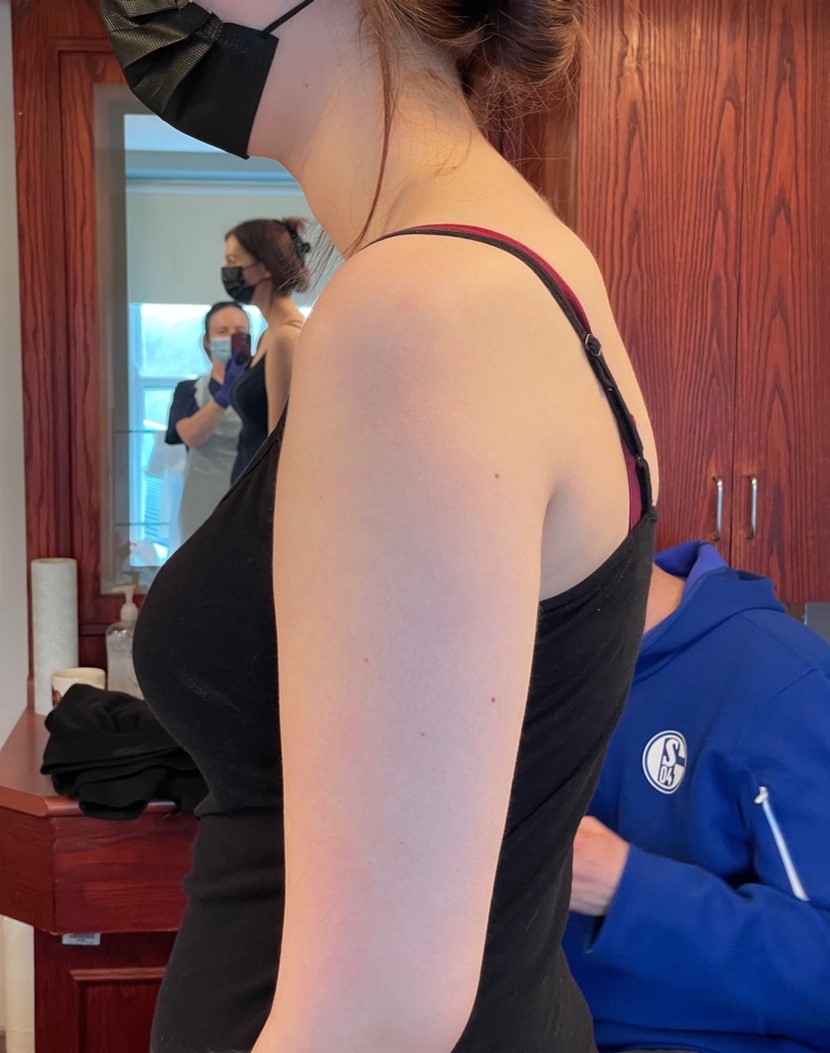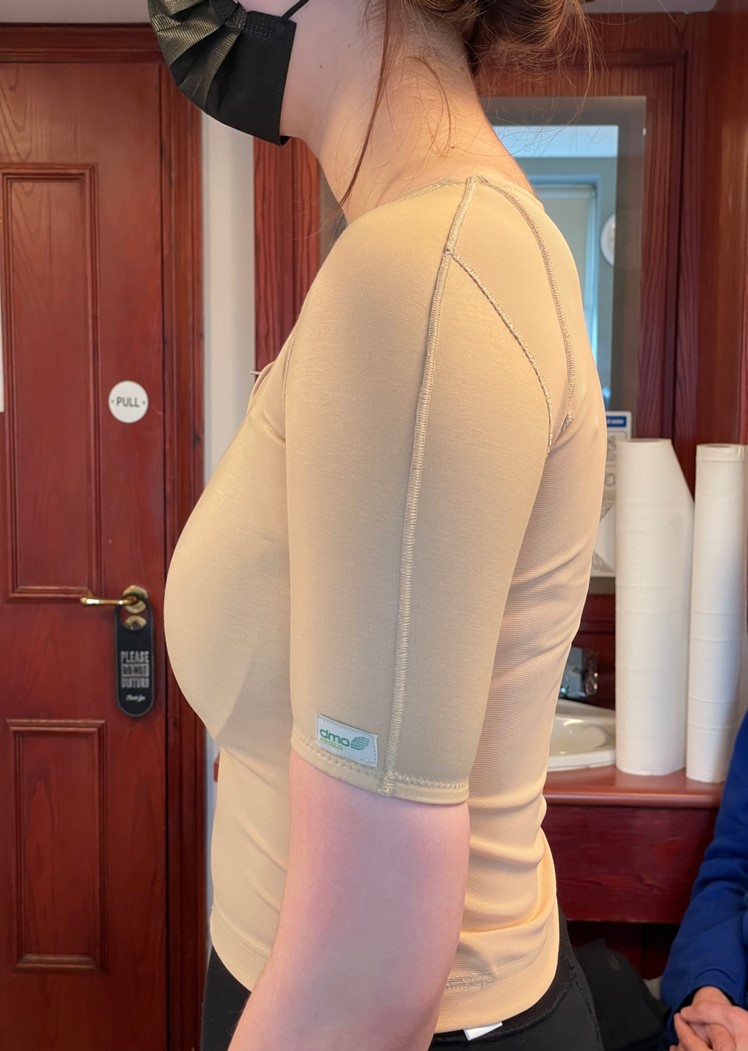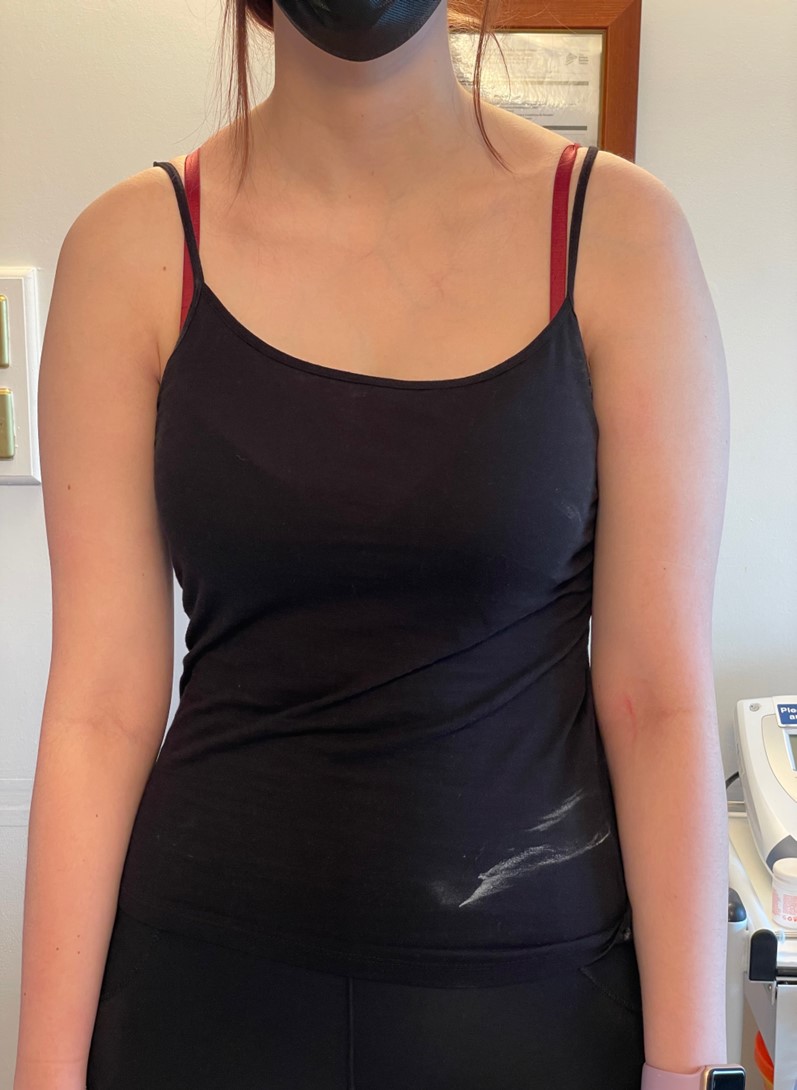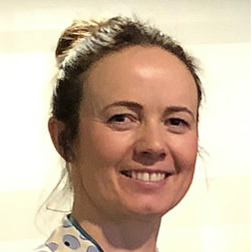Hi, I’m Anna. Firstly, let me start with my overall journey into specialising in symptomatic hypermobility as a Physiotherapist. It has been a long journey but one that I feel has given me the knowledge and desire to treating patients with hypermobility and hopefully helping to create care pathways. In 2000, myself and my business partner, Louise Grant, set up Physiocure a private Physiotherapy clinic in Leeds, United Kingdom (UK), with the main aim of developing a wellness centre that could fulfil the multidisciplinary needs of our patients. Over the years we developed a very close working relationship with many local and national surgeons who sent their complex patients to us. I was specialising in shoulders and Louise hips. We started to see similarities in our patient cases and the fact that following surgery many experienced delayed healing, poor recovery and reinjury. One such patient received a diagnosis of hypermobile Ehlers-Danlos Syndrome (hEDS) and that is how the journey began into our specialism of hEDS and Hypermobility Spectrum Disorders (HSD).
Through this specialisation I have also discovered that I too have symptomatic hypermobility which has allowed me to connect many of the issues I have faced over the years and join the dots! I look back at so many of my childhood, teenage and later years and realise that the ankle and knee pain/subluxations, intense growing pains, bladder problems, fatigue (I was nicknamed the” dormouse”), dyscalculia, recurrent sporting injuries to name a few was not me “attention seeking” but because I had an issue with my tissue! Driven by my own experience, I strive to provide the best care and understanding possible to my patients. As a physiotherapist my goals include improving treatment modalities available to people with hEDS/HSD and to increase the understanding of these conditions amongst fellow professionals. In addition to my primary role as a clinician, in May 2022 I began my Doctoral researcher position with Coventry University as part of the hEDS Together team led by Dr Gemma Pearce. The supervisory team consists of Dr Pearce, Professor Shea Palmer (Cardiff University) and Dr Behnam Liaghat (University of Southern Denmark), who are both also honorary members of Coventry University’s Research Centre for Healthcare and Communities with Gemma and Anna. I am also honoured to have been recognised by Ehlers-Danlos Support UK this year (2023) as a ‘Community Champion’ for my “extraordinary commitment to treating those with hEDS/HSD and quest for knowledge about the conditions”.
EDS UK Community Champion for “extraordinary commitment to treating those with hEDS/HSD and quest for knowledge about the conditions”
So how did the Doctoral research journey begin? In 2018, Louise and myself attended Ehlers-Danlos Society’s International conference in Ghent where we met a company called DM Orthotics™. This is a company that make Dynamic Movement Orthoses, which are a type of Dynamic Elastomeric Fabric Orthosis (DEFO). What are DEFO you may ask?! The Dynamic means that they support the joint they are around while still allowing change, movement, and activity. Elastomeric Fabric means that the fabric they are made from is elastic allowing movement of the joint while also providing compression. Orthosis is the name for a device that supports body parts making sure they stay aligned and protected whilst moving and functioning. DEFO are different to compression alone due to specific panelling that is inserted in them, which is meant to make your muscles work better, further enhancing support of the joints they are being used for.
Being hypermobile myself I went over to the DM Orthotics™ stall at the conference and tried on their vest for shoulder support. Immediately I felt a greater body alignment and more secure in my upper body. On returning to the UK, we arranged a meeting with DM Orthotics™, and over the following months an in-house clinic was set up with the company to provide our patients with a service enabling the orthotist (who assesses, measures, and fits the garments) and physiotherapist to lease directly over the care of individuals, creating a multi-disciplinary team. Since 2018, my colleagues at Physiocure and I have found that our patients have reported benefits from using DMO® in a wide range of hEDS/HSD issues. Although patient feedback is one of the main pillars of treatment selection on its own, it is anecdotal. Therefore, I realised to gain greater accessibility to these products for both therapist and patient, and an understanding of how and if they work for the hEDS/HSD population beyond anecdotal feedback, rigorous research would need to be carried out.
The PhD journey began.
Call it fate but Ghent is also where Louise and I met Gemma and Shea. I met Behnam in Rome (it may seem like I travel a lot, but conferences are a fantastic way to meet like-minded clinicians and researchers!) at the 2022 International Scientific Symposium on the Ehlers-Danlos Syndromes. How did this occur you may ask! Well Behnam had just defended his PhD and Shea was on the panel interrogating him! Shea came back from Denmark and introduced Behnam and I as our research had similarities with regards to hypermobility and the shoulder. We arranged to meet in Rome and over a café latte near the Trevi fountain with myself and Shea, Behnam joined the team! The knowledge and research experience that my supervisors have with regards symptomatic hypermobility has inspired me to develop my own skills as a clinician and researcher, and I am so very fortunate to call them my supervisors!
Hypermobility can cause proprioception issues in people, which means your ability to sense body parts in time and space is compromised leading to balance issues, clumsiness and general poor control of body parts or the whole body! The panelling, compression, and ability to support joints that DEFO offers is believed to help with proprioception. By making such improvements to people’s body awareness, we have found in our physiotherapy practice that DEFO can assist in allowing exercises or general functioning to be undertaken more confidently. This needs to be assessed fully as research though.
My doctoral research is therefore on DMO® and if they can assist in shoulder issues in hEDS/HSD. The first study will involve an in depth look at the current research that is available regarding what treatment techniques are currently available to people living with hEDS/HSD and have shoulder problems. The research team will then be studying exactly if and how DEFO work with laboratory-based investigations, and carrying out a study investigating patients and healthcare professionals’ experiences of treatment for hEDS/HSD shoulder issues and symptoms. The final part of the PhD will be getting people with hEDS/HSD into a shoulder DEFO to see if it helps reduce pain and improve their ability to function. Through all of this work the team are hoping that such research might increase treatment options available to people with hEDS/HSD.
Anna, Gemma, Shea, and Louise have recently had a publication on the use of DMO® for a hEDS hip problem. It has been widely received which has further highlighted the need for such a research programme. It was a case study on a 22-year-old woman from the UK who had been referred to Physiotherapy prior to hip surgery. Hip joints are like noses! They come in all shapes and sizes. This woman had hip dysplasia which means her hip sockets (the hip is a ball and socket joint) were shallow. This means that the ball isn’t held in place by the socket and can easily ‘slip out’ or move excessively. In turn this creates pain and an unstable, unhappy joint. In some cases, surgery is considered an option and often prior to surgery patients are referred to physiotherapy so that they can be prepared for the forthcoming operation and make them as strong as possible so that the body is functioning to the best of its ability post op.
“Hip joints are like noses!”
On initial physiotherapy assessment an in-depth history was taken, and the woman’s movement, function, muscle strength, balance, posture, and overall joint stability were looked at. She also explained that she had concerns about exercising because previously any exercises had made her pain worse, and that she also suffered with fatigue and dizziness which could be aggravated by exercising. From this assessment the main aims of treatment were addressed, which was the inability for her to improve her hip function and strength because of pain. The woman in this case study also had suspected Postural Tachycardia Syndrome (PoTS), which was causing dizziness and episodes of fainting, further leading to a decrease in her ability to walk and generally function. A referral to a Rheumatologist and Cardiologist for formal diagnosis was made because the Physiotherapist suspected hEDS/HSD with subsequent PoTS. Both conditions were confirmed and diagnosed, which led to the patient feeling listened too and validated. It gave her a better understanding of her body and helped with the surgical preparations.
To compliment her physiotherapy exercise programme, a trial of DMO® leggings were suggested to aid with compression of the legs for the PoTS symptoms, to help with increasing the bottom muscles that help with hip movement and control, and to help with overall proprioception to the hip joints and lower limbs. This in turn would allow a general improvement in postural development. In photo (B) below you can see this improved posture compared to photo (A) with a reduction in the hyperextension at the knees and decreased sway back, which is a term to describe if you stand with your pelvis tilted forward. A tailored exercise programme was begun once the leggings had been fitted. All the exercises were accommodated to her needs, which included pain, chronic fatigue, and dizziness, and took place over a 16-week period leading up to the first operation on the right hip. Following this period, the pain had reduced, and the patient felt more coordinated and stable when wearing the DMO® leggings. One of the most important findings was that she felt she could perform her exercises independently, safely, and happily without injury. Her overall strength had increased in her hip muscles and her symptoms of dizziness and light-headedness had decreased.
From this case study example, we can conclude that by using DMO® this patient had been assisted with her exercises, which helped with her preparation for surgery and led to an overall reduction in her symptoms. This case study, although very useful, is an indicator of the need for further research into this treatment for hEDS/HSD and other joints in a wide array of situations. For my doctoral research, I aim to identify why these supports may help and if they can assist with other treatment options available.
For now, the question remains: Are DEFO another tool to add to the ‘toolbox’ to allow people with hEDS/HSD the ability to function?
You can find out more about my Doctoral research, as well as other hEDS Together projects, and you can also follow our live updates on Twitter @hEDStogether and Instagram @hEDS_together.
Reference to the case study publication
Higo, A., Pearce, G., Palmer, S. & Grant, L. (2023) The value of Dynamic Movement Orthoses in the management of a complex Hypermobile Ehlers-Danlos Syndrome patient: a case report. Clinical Case Reports, 11(1) https://doi.org/10.1002/ccr3.6821








